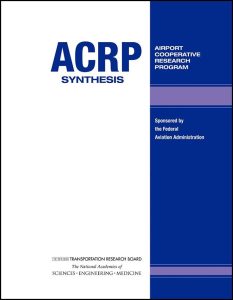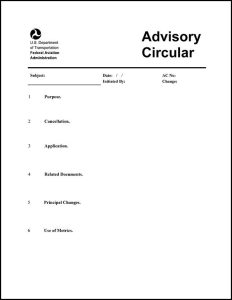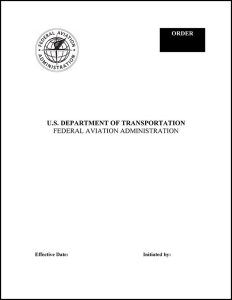To narrow the library of airside resources, use the filter boxes or airport map below or search box above.
Click an item below to expand.
Resources Matching Your Search
2021
This resource is a webpage that provides information on the Electronic Code of Federal Regulations (e-CFR) Title 14, Chapter I, Subchapter G, Part 139, which contains guidance on certification, airport certification manual, and operations.
2011
ACRP Synthesis 27 provides insight into common airport self-inspection practices. A comprehensive self-inspection program includes training, inspecting, reporting discrepancies and findings, follow-up, resolution and closeout, and quality control. The report will help airports in benchmarking their self-inspection programs to peer airports and practices considered successful by regional FAA personnel.
2022
This advisory circular (AC) provides information to airport operators on airport self-inspection programs and identifies items that airport operators should include in such a program. Sections include background, responsibilities, inspection techniques, knowledge and equipment for self-inspection, components of a safety self-inspection program, regularly scheduled inspections, continuous surveillance inspection, periodic condition inspection, special condition inspections, and condition reporting. The document includes airport safety self-inspection, continuous surveillance, periodic condition inspection and special inspection checklists.
2011
This advisory circular (AC) contains information based on the minimum ARFF vehicle requirements established by Title 14 Code of Federal Regulations (CFR) Part 139, Certification of Airports. The AC is also based on the FAA additions, exemptions, or amendments made to National Fire Protection Association (NFPA) 414, Standard for Aircraft Rescue and Fire Fighting Vehicles (2007 edition) (as referenced in Appendix A of this document) and NFPA 1901, Standard for Automotive Fire Apparatus (2009 edition).
2021
An airport emergency plan (AEP) is meant to support airports in defining roles and responsibilities of stakeholders during emergencies, identifying threats that could affect airports, and establishing communication protocols for the airport community. ACRP Synthesis 115 gathers relevant data specific to AEP practices that can be applied to other airports, including general aviation airports, whether required to maintain an AEP or not.
2020
This advisory circular (AC) describes the standards and provides guidance in the development of a surface movement guidance and control system (SMGCS) plan for U.S. airports, in which scheduled air carriers are authorized to conduct operations when the visibility is less than 1,200 feet runway visual range (RVR). An SMGCS plan facilitates the safe movement of aircraft and vehicles on the airport by establishing more rigorous control procedures and requiring enhanced visual aids.
2020
This advisory circular (AC) describes the FAA's standards for marking and lighting structures to promote aviation safety. Chapters include administrative and general procedures, general, marking guidelines, lighting guidelines, red obstruction light system, medium-intensity flashing white obstruction light systems, high-intensity flashing white obstruction light systems, dual lighting with red/medium-intensity flashing white light systems, dual lighting with red/high-intensity flashing white light systems, aircraft detection lighting systems, marking and lighting of catenary and catenary support structures, marking and lighting moored balloons and kites, marking and lighting wind turbines, marking and lighting temporary structures, marking and lighting equipment and information.
2015
Part 1 provides guidance for the implementation of Annex 14, Volume I, specifications relating to rescue and firefighting. It includes material concerning the level of protection to be provided at an airport. The manual also contains information on rescue and firefighting vehicle specifications, extinguishing agent characteristics, siting of fire stations and operating procedures for dealing with an emergency. This resource is available at the ICAO store for $131.
2014
This document provides guidance to evaluate the establishment of commercial space launch sites at or near federally obligated airports, including general aviation airports and airports certificated under 14 CFR part 139.
2020
Managers of airports of all sizes face a perennial dilemma: how to efficiently train operations personnel to meet Title 14 Code of Federal Regulations Part 139 requirements and ensure a safe and secure airport environment. ACRP Synthesis 112 focuses on airport operations employees and aims to better understand current training methods and programs in use by small airports in the United States (including non-hub, non-primary commercial service, reliever, and general aviation) to initially and recurrently train airport operations employees.
1999
The objective of the Runway Safety Area (RSA) Program is that all RSAs at federally obligated airports and all RSAs at airports certificated under Title 14 Code of Federal regulations (CFR) Part 139 shall conform to the standards contained in AC 150/5300-13 Airport Design to the extent practicable.
2017
This order establishes the process for the initiation, revision, coordination, and management of the modifications of standards (MOS) applicable to airport design, construction material, and equipment projects.





